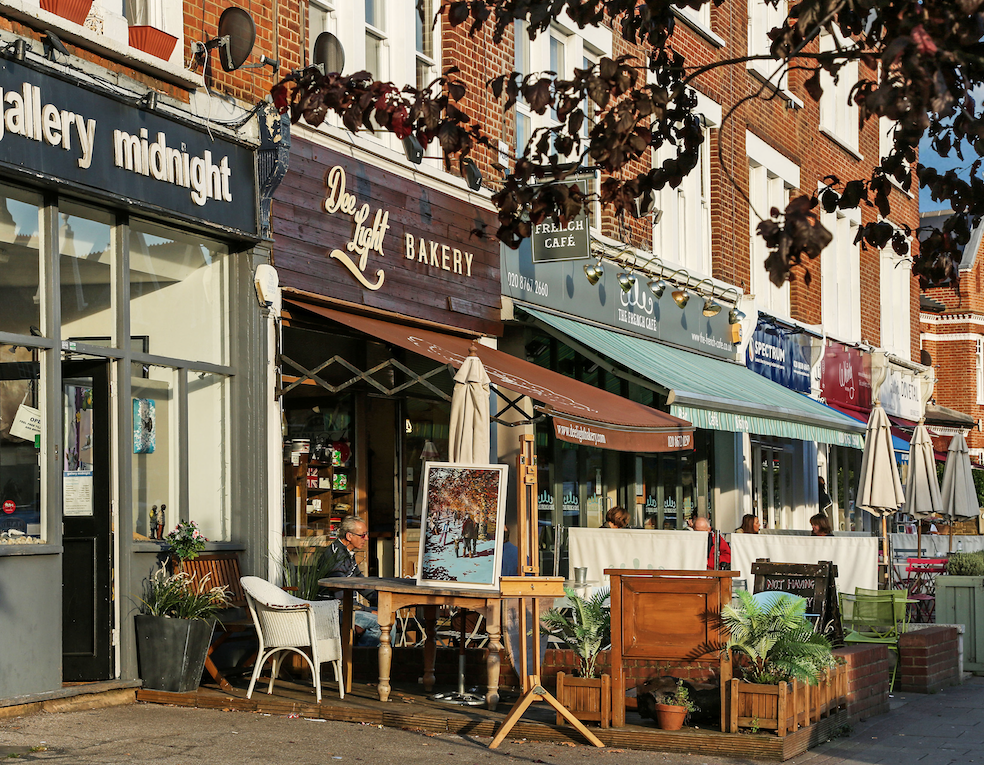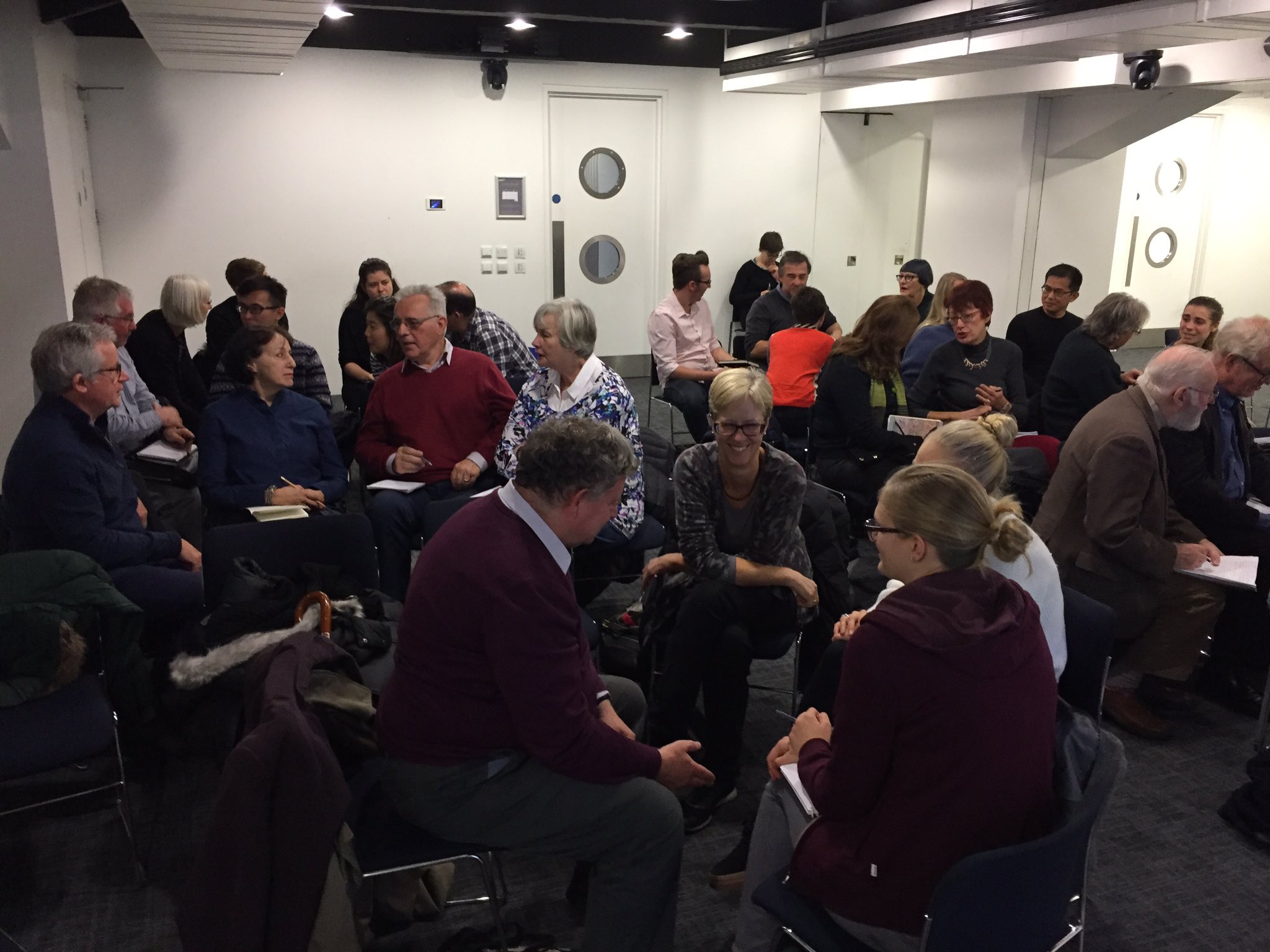Post
REPORT | Saturday Morning Planning School 4: Delivering Growth
27 Nov 2017
The fourth of the Society's Saturday Morning Planning School talks was on Saturday 11th November 2017 with Rachel Fisher (Head of Infrastructure in the Cities and Local Growth Unit at DCLG) explloring the flip side of local growth – can places become too successful? Drawing on international and UK examples, the talk explored the relationship between planning policy and what happens in reality. Barry Coidan reports.
On Saturday we were treated to Rachel Fisher’s enlivening personal view on how growth happens on the ground in towns and cities here and around the world.
Rachel began with the general and took us down to the particular - Harlow, a planned town in Essex, and Haringey, a not so planned borough of London. On the way we visited New York, Bologna and Bilbao.
In general terms the conditions for growth (and prosperity) are: good jobs, homes (affordable and market priced) and connectivity - be that broadband or transport links. We’re all urban now. The 21st century is the century of cities and London takes its place as a global city - with a huge population vying for limited space. Imagine the functions of New York, Washington and Los Angeles in one place - that’s London. Its size, economy and status means it has a disproportionate impact on the rest of the UK. Scaling a map based on population, the UK looks grotesquely distorted - with London bloating out much of England south of the Wash.
Since 2010 Governments have tried to address this imbalance by empowering local areas. Local initiatives have come and gone from Local Enterprise Partnerships through to City Deals 1 & 2, the Northern Powerhouse, Midlands Engine and the creation of six Metro-Mayors, who were elected in May. We, however, tend to see the UK as fixed in terms of growth and development. Helping one or two areas, by definition means other areas must suffer - this fosters rivalry and political stand offs. It isn’t like that – one areas gain doesn’t mean another’s loss.
Action at the local, community level is vital. Tying in all those who make up the community, who initiate and finance development, is essential. It’s not just the local authorities, local businesses and community groups but also the banks and the developers. They all have a part of play in economic growth and have legitimate views on what they see as important in encouraging and maintaining the economic and cultural life of an area.
From a planning perspective how we allocate and use space is important - what’s to be commercial and what’s to be residential must be clearly set out. Before, however, planning ahead you need to know who has the control, and whose interests are beginning served, otherwise your desired outcomes may be skewed.
The grand scheme doesn’t work anymore. Many live in sterile, isolating housing estates - these are neither rural nor urban. Today’s retail experience is a car drive to a planned retail park. What people look for when they have the opportunity are places with variety, complexity and interest. That’s what makes places interesting - detail as well as a sense of awe - the big scene. For example, in New York in the vicinity of the Lincoln centre you can witness the sun setting over the Hudson River. Seeing, witnessing that is powerful, that’s what living in a city is all about. A sense of the special. Or a square in Bologna; it’s lively, it buzzes with...people. That why people hang out there because others are also there, enjoying a sense of togetherness. Then again New York took an abandoned railway spur on the west side of Manhattan redesigned it as a "living system" drawing from multiple disciplines including landscape architecture, urban design, and ecology. In the middle of the city one can experience nature, clean air and flowing waters.
Art can be a great regenerator. The Guggenheim Museum in Bilbao acts as an anchor for further development, it was planned to draw in a wide range of cultural, commercial and community activity made accessible through Bilbao multiple modes of transport (bus, car and trams). Bilbao is also intergenerational - it feels really lived in.
From the Bilbao and its green mountains Rachel took us to East Essex and Harlow (New Town). Harlow, along with a number of other “new towns” was built after the Second World War to rehouse people bombed out from London. The capital’s growth was restricted by the Green Belt and the satellite new towns acted as pressure valves. This was master planning on a major scale - experience over the intervening 70 years highlights lessons learnt.
Rachel described a recent visit to the town to highlight some of its planning shortcomings. First the rail station is quite a way from the town centre - deliberately so. Sir Frederick Gibberd, who designed Harlow, didn’t want it to be a commuter town - people were to work locally. The trouble was it is ideally situated as a commuter town.
To get from the station to the Civic Centre, Rachel looked forward to a pleasant walk across a park down a well worn track. The track came to an abrupt stop at a murderous four lane highway which she had to cross and then through a car park before arriving at the town centre, where street traders were plying their trade - except there was no signage - so you wouldn't know they were there unless by chance you happened upon them. The Civic Centre with its impressive facade is a brilliant piece of design and is made full use of with a community centre and retail space. There’s a 90’s shopping centre serviced by ample car parking space which means the centre is well used. The marketplace, however, which once had 50 stallholders died when the new shopping centre arrived.
The problem with Harlow is fragmented ownership and control. There’s no development plan so the town is subject to speculative builds. Someone wants to build here – you’ve little case to say they can’t. What’s important is effective leadership, which has the power to decide what is wanted. There’s no modern unifying vision of what Harlow is and can be.
In Harlow town centre, there’s a play park but it’s not used by kids. They’ve just lost the last live music venue yet the market place now deserted could be used instead. Recently the Government changed rules on building use -so shops could be converted into homes. That works if there’s a community and amenities, but where this has happened in Harlow the resulting new housing has not been successful. There is no link with the existing community.
Change is happening: there are efforts to enliven and diversify by creating artist studios and building on its many modern works of sculpture in the town’s open spaces and reviving marketing Harlow as “Sculpture Town”.
Haringey in North London is a melting pot. It has a reasonably successful High Street - lots of shops although their makeup, like so many high streets, is changing. Independent utility shops, the iron monger, dress shop, dairy, butcher etc are replaced by hairdressers, coffee shops and nail bars. And yet, there’s still space for really quirky shops such as one selling hot nuts. Some old high street standbys, however, are going. A long established furniture shop has closed and given way to a discount store. Independent shops are under threat and housing is really expensive. Rachel said that now she couldn’t buy into the area, so what chance those who work to provide the services in the area. They have no chance of living near to where they work. This presents a real problem for those communities and a challenge for planners and policy makers alike.
After her talk Rachel organised us into groups to chat about a couple of community issues. The room buzzed as we exchanged our experiences and expressed our views. In discussion, both planning and not planning were seen as suboptimal. We heard about Ebbsfleet, the planned new garden town on the Thames Estuary where 15,000 new homes are to be built yet so far only a small number have actually been constructed. In Romford little planning had led to the ruination of local shops with the construction of two massive Malls in the town centre. Yet Harlow was seen as good town planning with zoning, concentration on housing, excellent retail centre with space for the motor car. 70 years on we’re living with that legacy.
At the beginning of her talk Rachel reminded us that the Budget was less than two weeks away. What can the DCLG expect from the Chancellor? A plan of the new Albion?


